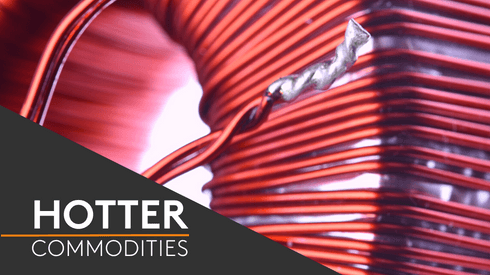The wide price gap between bismuth oxide and bismuth metal in Europe persisted in the week to Friday March 21, as metal supply in the region was extremely tight due to China’s export controls on the metal, while oxide continued to flow from the country, according to market participants.
The export control has disrupted the traditional relationship between the two prices since it was imposed on February 4. Previously, the two prices had historically been closely interlinked.
Fastmarkets’ recent price assessment for bismuth oxide, cif Rotterdam was $8.85-13.61 per lb during the first session it was assessed.
And the assessed price for bismuth 99.99% Bi min, in-whs Rotterdam was $30-36 per lb on the same day, down by 5.04% from the $30-39.50 per lb that was assessed in the previous session on Wednesday, March 19.
China produces the vast majority of the world’s bismuth, and prices there have been less affected by the export control.
The assessed price for bismuth 99.99% Bi min, in-whs China was 150,000-160,000 yuan ($20,719-22,100) per tonne on Friday, narrowing downward from 150,000-180,000 yuan per tonne on March 14.
Export controls disrupt traditional price correlation
Market participants told Fastmarkets that, historically, before the export control and subsequent decoupling, bismuth oxide prices were derived using a formula based on approximately 90% of the metal price plus a manufacturing fee.
Although China included bismuth-related items in its export control list on February 4, bismuth oxide was not officially subjected to these restrictions, but some market participants have reported difficulties shipping bismuth oxide to the US.
Prices for bismuth metal in Europe have surged by 550% to record levels on the back of the export control and subsequent supply shortage in the region.
The metal is widely used in metallurgical applications and in the production of oxide, while bismuth oxide is widely used in electronics, optics, pharmaceuticals, catalysts and other fields.
Despite strict export controls on various metals, the export of bismuth oxide should be unaffected. Producers are actively producing and sourcing raw materials, and exporters are quoting as normal, sources in China told Fastmarkets.
“We have been engaged in the export of bismuth oxide, offering both FOB China and CIF prices. The market has been extremely volatile recently, and we are working overtime every day,” a Chinese bismuth oxide exporter said.
Bismuth oxide exports see higher volumes
As bismuth metal is subject to export controls while bismuth oxide is not, the market is reportedly leaning toward exporting bismuth oxide for higher profits. The recent surge in China’s bismuth market and rising prices have also been driven by active purchases from bismuth oxide manufacturers.
“Those purchasing bismuth ingots at high prices likely have their own export channels. Exporting bismuth oxide yields higher profits than selling domestically, and even the price of bismuth oxide is rising now,” a Chinese bismuth producer said.
Following the export control announcement, China exported only 4,000 kg of unwrought bismuth in February, a sharp decline of 93.2% compared with 58,809 kg in January, according to the latest data released by China customs on Thursday March 20.
In contrast, China exported 839,426 kg of bismuth oxide in February. Although this is lower than the 1,707,369 kg exported in January, it is higher than the monthly average export volume of 708,300 kg in the previous year.






